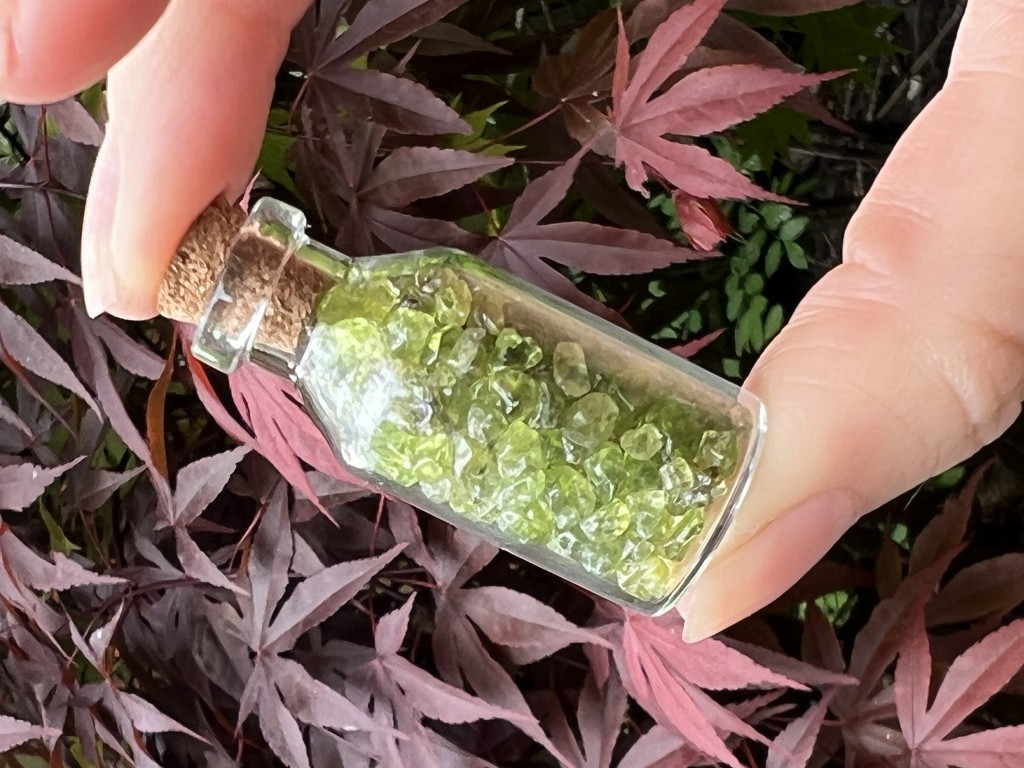
Our Shop
Peridot Chips Raw High Grade Crystal Bottle AAA+
£6.99
Peridot Rough High Grade Crystal weighing up to 8g and measuring 44mm by 8mm by 8mm. Listing is for one. Peridot is named after the French word peritot, meaning gold, because the mineral can vary towards this color. Peridot is the birthstone for the month of August. It is also the stone given to celebrate the 16th year of marriage. Peridot has a very long written history. Ancient papyri record the mining of these stones as early as 1500 BC. The main source of peridot in the ancient world was Topazo Island (now Zabargad or St. John’s Island) in the Egyptian Red Sea. In Ancient times, peridot stones were used for carved talismans. Island habitants were forced to collect the gems for the Pharaoh’s treasury. Legend says that jealous watchers who had orders to put to death any trespassers guarded the entire island. The story continues that the miners worked in the daytime as well as night, as the gems could be found after nightfall due to their radiance. The miners would mark the spot at night for retrieval the following day. Peridot is the National gem of Egypt. Ancient Egyptians knew it as “the gem of the sun.” Peridot was mined for over 3,500 years on St Johns Island. As late as the 19th Century, the Kedhive of Egypt had a monopoly on the mines. At one point, the island’s exact whereabouts became a mystery for several centuries until being rediscovered in 1905. Joel Aram, from the “Color Encyclopedia of Gemstones 2nd Edition,” writes “Zabargad is an island in the Red Sea that is often shrouded in fog, making it difficult for ancient navigators to find. The location has been lost in fact, for centuries, and was rediscovered in about 1905. The island is located 35 miles of the Egyptian coastal port of Berenica.” In the 19th Century, the mines on Zabargad Island produced millions of dollars worth of peridot. After 1905, production of the gems peaked, but by the late 1930’s it tapered off to practically nothing and reached a virtual stand still in 1958, when the mines were nationalized. Although parcels of St. Johns peridot still come into the market once in a while, it is not known whether it is new or old. Most assume it is old.
